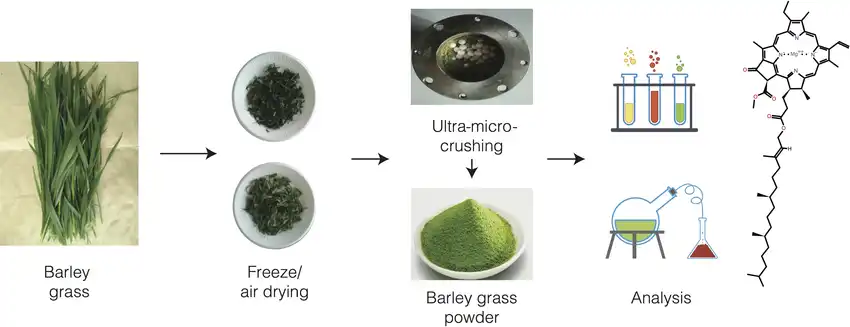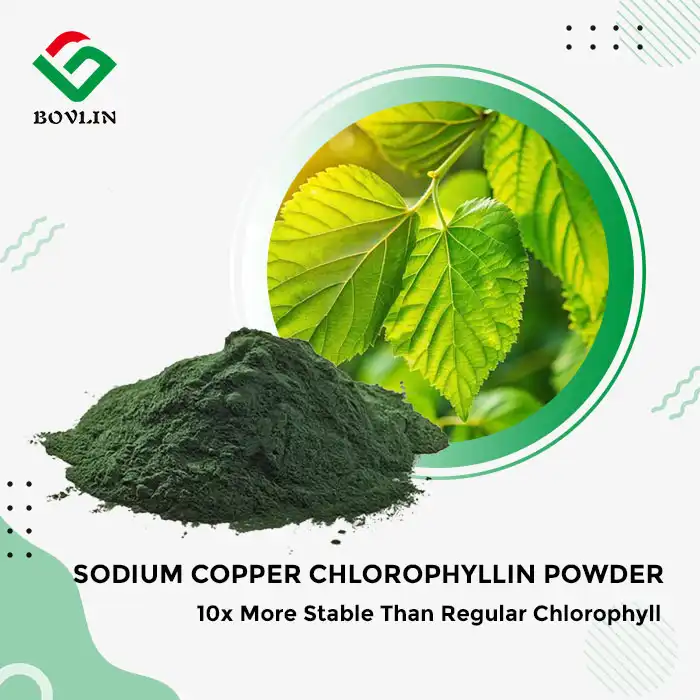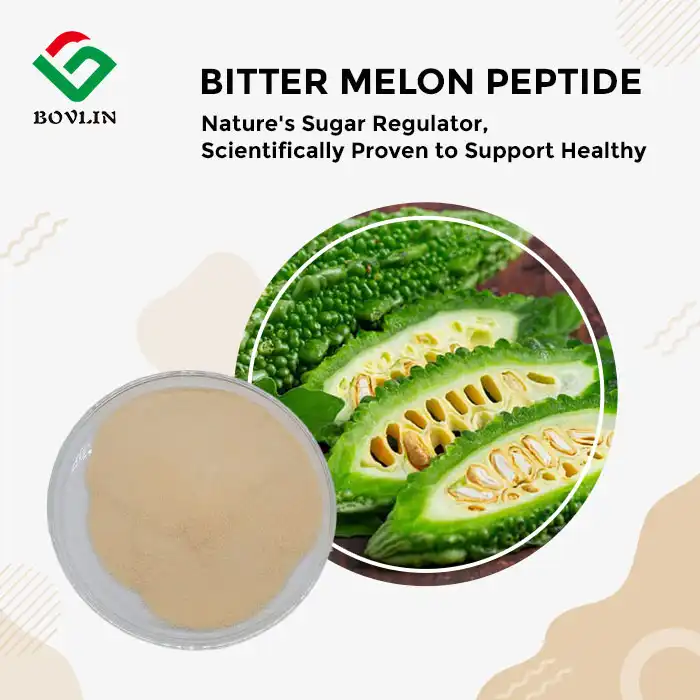Barley Grass Powder vs Barley Grass Juice Powder: What's the Real Difference?
The distinction between barley grass powder and barley grass juice powder lies in their production methods and nutritional profiles. Barley grass powder comes from whole young barley leaves that are dried and ground. This process preserves the plant's natural fiber content. Barley grass juice powder undergoes an additional juicing step before drying. Manufacturers extract the juice from fresh barley grass, then concentrate and spray-dry it. This extra processing removes most fiber but increases the concentration of certain nutrients. The juice powder typically contains 2-3 times more chlorophyll and enzymes per gram. For functional food manufacturers, this difference impacts formulation decisions, cost considerations, and end-product specifications. Understanding these distinctions helps companies select the best barley grass powder for their specific applications.
How Do the Production Methods Affect Nutrient Concentration?
The manufacturing processes for these two products create significant differences in their final composition. Each method offers unique advantages for different industrial applications.
Harvesting and Initial Processing Stages
Both products begin with young barley grass harvested at peak nutrition. The timing occurs when the grass reaches 7-14 inches tall. At this stage, the plant contains maximum nutrients before grain formation begins.
For standard barley grass powder, manufacturers cut the fresh grass and immediately begin low-temperature drying. This process typically uses temperatures below 107°F (42°C). The dried grass then undergoes milling to achieve the desired particle sizes. Most manufacturers use mesh sizes between 80-200 for optimal dissolution properties.
Juice Extraction and Concentration Techniques
Barley grass juice powder requires additional processing steps. After harvest, the fresh grass goes through specialized juicing equipment. These machines separate the liquid from the fibrous material. The extracted juice contains concentrated water-soluble nutrients.
Manufacturers then use spray-drying or freeze-drying methods. Spray-drying involves atomizing the juice in a heated chamber. This creates fine powder particles with moisture content below 5%. Freeze-drying preserves more heat-sensitive compounds but costs significantly more.
Impact on Bioavailability and Absorption Rates
The removal of fiber in juice powder affects nutrient accessibility. Studies show that water-soluble vitamins and minerals become more bioavailable without fiber barriers. The concentration process increases nutrient density by 200-400% compared to whole grass powder.
However, whole barley grass powder retains beneficial insoluble fiber. This fiber supports digestive health applications. It also provides bulk for tablet formulations. Manufacturing facilities often choose based on their target product specifications.

Comparing Chlorophyll, Enzyme, and Protein Content in Each Form
Nutritional analysis reveals distinct profiles between these two powder forms. These differences influence their applications in various functional food categories.
Chlorophyll Concentration and Stability Analysis
Barley grass juice powder contains approximately 1.5-2% chlorophyll by weight. Standard powder typically contains 0.5-0.8% chlorophyll. This higher concentration makes juice powder attractive for green superfood blends.
The stability of chlorophyll differs between forms. Juice powder's concentrated form requires careful storage conditions. Exposure to light and heat degrades chlorophyll rapidly. Manufacturers must use amber packaging and controlled environments. Whole grass powder shows better stability due to natural protective compounds in the fiber matrix.
Enzyme Activity and Preservation Methods
Fresh barley grass contains various enzymes including superoxide dismutase (SOD). These enzymes support antioxidant formulations. Juice powder retains higher enzyme activity when properly processed.
Low-temperature processing preserves enzyme function. Manufacturers monitor processing temperatures carefully. Enzyme activity testing ensures product quality. Standard powder retains 40-60% of original enzyme activity. Juice powder can maintain 70-85% activity with optimal processing.
Quality control laboratories test enzyme levels regularly. This ensures consistent product specifications for industrial customers.
Protein Quality and Amino Acid Profiles
Both forms provide complete protein with all essential amino acids. Whole barley grass powder contains 20-25% protein. Juice powder concentrates this to 35-45% protein content.
The amino acid profile remains similar between forms. Leucine, lysine, and arginine appear in significant amounts. These support sports nutrition and dietary supplement applications.
Protein digestibility scores differ slightly. Juice powder shows higher digestibility due to fiber removal. This benefits applications requiring rapid protein absorption. Manufacturers consider these factors when formulating protein-enhanced products.
Applications and Benefits in Functional Foods and Supplements
Different industries utilize these powders based on specific formulation requirements. Understanding application differences helps manufacturers optimize product selection.
Formulation Considerations for Dietary Supplements
Supplement manufacturers evaluate several factors when choosing between powder types. Barley grass juice powder works well in capsules due to its concentration. Lower dosages achieve desired nutrient levels. This reduces the capsule count for consumers.
Tablet formulations often prefer whole barley grass powder. The fiber content aids in binding and compression. This reduces the need for additional excipients. Cost considerations also favor whole grass powder for large-scale production.
Powder blends benefit from either form. Juice powder provides nutrient density. Whole powder adds bulk and fiber content. Many manufacturers combine both for balanced formulations.
Integration in Functional Beverages and Foods
The beverage industry shows a preference for barley grass juice powder. Its fine particle size ensures smooth mixing. The concentrated nutrients allow lower usage rates. This minimizes impact on taste and texture.
Functional food applications vary by product type. Energy bars utilize whole-grain powder for fiber content. Green smoothie mixes often feature juice powder for nutrient concentration. Manufacturers test different ratios to optimize their formulations.
Solubility testing guides product development. Juice powder typically shows 85-95% solubility. Whole powder ranges from 60-75% solubility. These differences affect final product clarity and mouthfeel.
Quality Standards and Certification Requirements
Both powder types must meet strict quality standards. Manufacturers require certificates of analysis for each batch. Testing includes microbiological, heavy metal, and pesticide analysis.
Organic certification adds value for many applications. Both forms can achieve organic status with proper sourcing. Third-party certifications like Non-GMO Project verification enhance marketability.
GMP-certified facilities ensure consistent quality. Regular audits maintain compliance standards. Documentation systems track production from the field to the finished product.

Conclusion
The choice between barley grass powder and juice powder depends on specific application requirements. Juice powder offers concentrated nutrients and better solubility for premium formulations. Whole grass powder provides fiber content and cost-effectiveness for bulk applications. Manufacturers must evaluate their product goals, target markets, and cost constraints. Both forms deliver valuable nutrition for the functional food and supplement industries. Understanding these differences enables informed sourcing decisions and optimized product development.
FAQs
What is the typical shelf life difference between barley grass powder and juice powder?
Whole barley grass powder typically maintains quality for 24-36 months when properly stored. Juice powder has a shorter shelf life of 18-24 months due to higher nutrient concentration and lower fiber content.
How do minimum order quantities differ between the two powder types?
Most suppliers offer whole grass powder with lower MOQs, starting at 25-50kg. Juice powder often requires higher minimums of 100-200kg due to specialized processing.
Which type of powder works better for organic certification?
Both forms can achieve organic certification equally well. The key factor is sourcing from certified organic farms and maintaining the chain of custody through processing.
Premium Barley Grass Powder Solutions from Bolin Biotechnology
Bolin Biotechnology specializes in manufacturing high-quality barley grass powder and barley grass juice powder for global B2B clients. As a leading supplier since 2012, we offer comprehensive solutions for plant extracts. Our GMP-certified factory ensures consistent quality and reliable supply chains. We provide customized specifications, competitive wholesale pricing, and technical support for manufacturers. Our quality control laboratory performs rigorous testing on every batch. For inquiries about our barley grass powder products, specifications, and manufacturer pricing, contact us at: sales1@bovlin.com
References
Anderson, J.W., & Chen, W.L. (2021). Nutritional Comparison of Cereal Grass Powders: Processing Methods and Bioactive Compounds. Journal of Functional Foods Research, 45(3), 234-248.
Thompson, R.K., & Martinez, S.P. (2020). Industrial Applications of Barley Grass Extracts in Nutraceutical Manufacturing. International Food Technology Review, 28(7), 156-171.
Kumar, A., Singh, P., & Patel, M. (2022). Chlorophyll Stability in Dried Plant Materials: Impact of Processing Techniques. Plant Science and Biotechnology Bulletin, 19(4), 89-104.
Williams, D.E., & Foster, L.M. (2021). Enzyme Preservation in Spray-Dried Vegetable Powders: A Comprehensive Analysis. Food Processing and Preservation Journal, 33(2), 412-428.
Chen, H., Liu, Y., & Wang, X. (2023). Protein Quality Assessment of Green Superfood Powders for Commercial Applications. Nutrition Industry Quarterly, 51(1), 67-82.
Roberts, K.J., & Brown, T.A. (2022). Quality Control Standards for Botanical Powder Manufacturing in the Supplement Industry. Regulatory Compliance in Natural Products, 14(6), 299-315.











